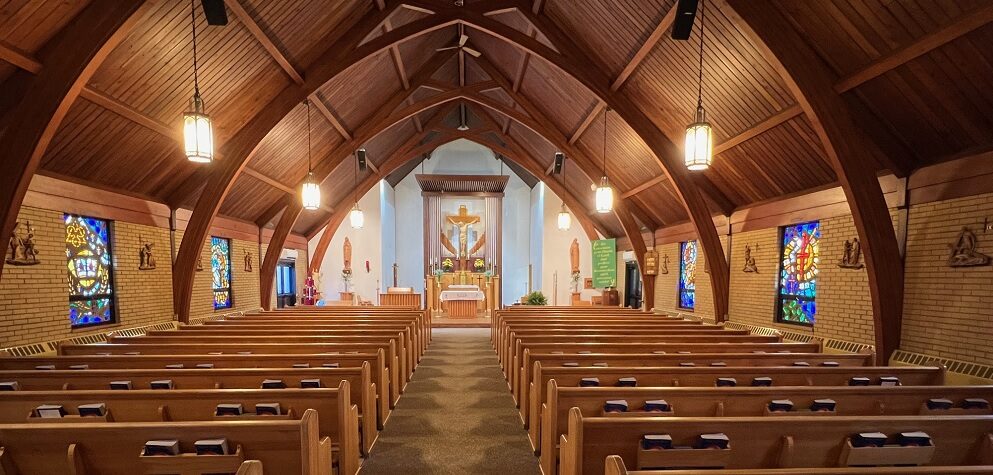The Holy Rosary is a Christ-centered prayer, rooted in Sacred Scripture, that helps us meditate on the lives of Jesus and Mary. The rosary is a Catholic devotion in which we ask for the intercession of Mary, the Mother of God, in drawing closer to her divine Son, Jesus.
“By its nature the recitation of the Rosary calls for a quiet rhythm and a lingering pace, helping the individual to meditate on the mysteries of the Lord’s life as seen through the eyes of her who was closest to the Lord. In this way the unfathomable riches of these mysteries are unfolded.” ―Pope Saint Paul VI
How to Pray the Rosary with Bishop Barron (3:35)
The popularity of the Rosary has been attributed to St. Dominic and the Dominican Order. It grew out of the laity’s desire to have 150 prayers to match the 150 psalms chanted by the monks in monasteries. In 1569, St. Pius V officially recommended the praying “of 150 angelic salutations . . . with the Lord’s prayer at each decade . . . while meditating on the mysteries which recall the entire life of our Lord Jesus Christ.”
The Rosary is a Scripture-based prayer. It begins with the Apostles’ Creed, which is itself a summary of the great mysteries of Catholic faith, based on Scripture, from creation through redemption and up to the Resurrection of the body and everlasting life. The Our Father, which introduces each mystery, is taken from the Gospels. The first part of the Hail Mary is composed from verses from the Gospel of Luke (1:29 and 1:42), the angel’s words announcing Christ’s birth and Elizabeth’s greeting to Mary. St. Pius V officially added the second part to the Hail Mary.
The Mysteries of the Rosary
The Mysteries of the Rosary center on the events of Christ’s life. The Joyful Mysteries, which recall aspects of the Incarnation, are the Annunciation, the Visitation, the Nativity, the Presentation of Jesus in the Temple, and the Finding of the Child Jesus after Three Days in the Temple. The Sorrowful Mysteries, which focus on Christ’s suffering and death, are the Agony in the Garden, the Scourging at the Pillar, the Crowning with Thorns, the Carrying of the Cross, and the Crucifixion and Death of Jesus. The Glorious Mysteries are the Resurrection, the Ascension into Heaven, the Sending of the Holy Spirit upon the Apostles at Pentecost, the Assumption of Mary, and the Crowning of Mary as the Queen of Heaven and Earth. In October of 2002, Pope John Paul II issued the apostolic letter On the Most Holy Rosary (Rosarium Virginis Mariae; RVM). In the letter, the Holy Father added the five additional mysteries that he called the Luminous Mysteries: the Baptism of the Lord, the Miracle at Cana, the Proclamation of the Kingdom of God, the Transfiguration, and the Institution of the Eucharist.
The repetition of the ten Hail Mary’s with each Mystery is meant to lead us to restful and contemplative prayer related to the Mystery. Many who say the Rosary think of the words as background music that leads them to rest in the divine presence. The gentle repetition of the words helps us to enter the silence of our hearts, where Christ’s Spirit dwells.
Holy Rosary Prayer
O God, whose only-begotten Son, by His life, death, and resurrection, has purchased for us the rewards of eternal life; grant, we beseech Thee, that, meditating upon these mysteries of the Most Holy Rosary of the Blessed Virgin Mary, we may imitate what they contain and obtain what they promise, through the same Christ our Lord. Amen.
